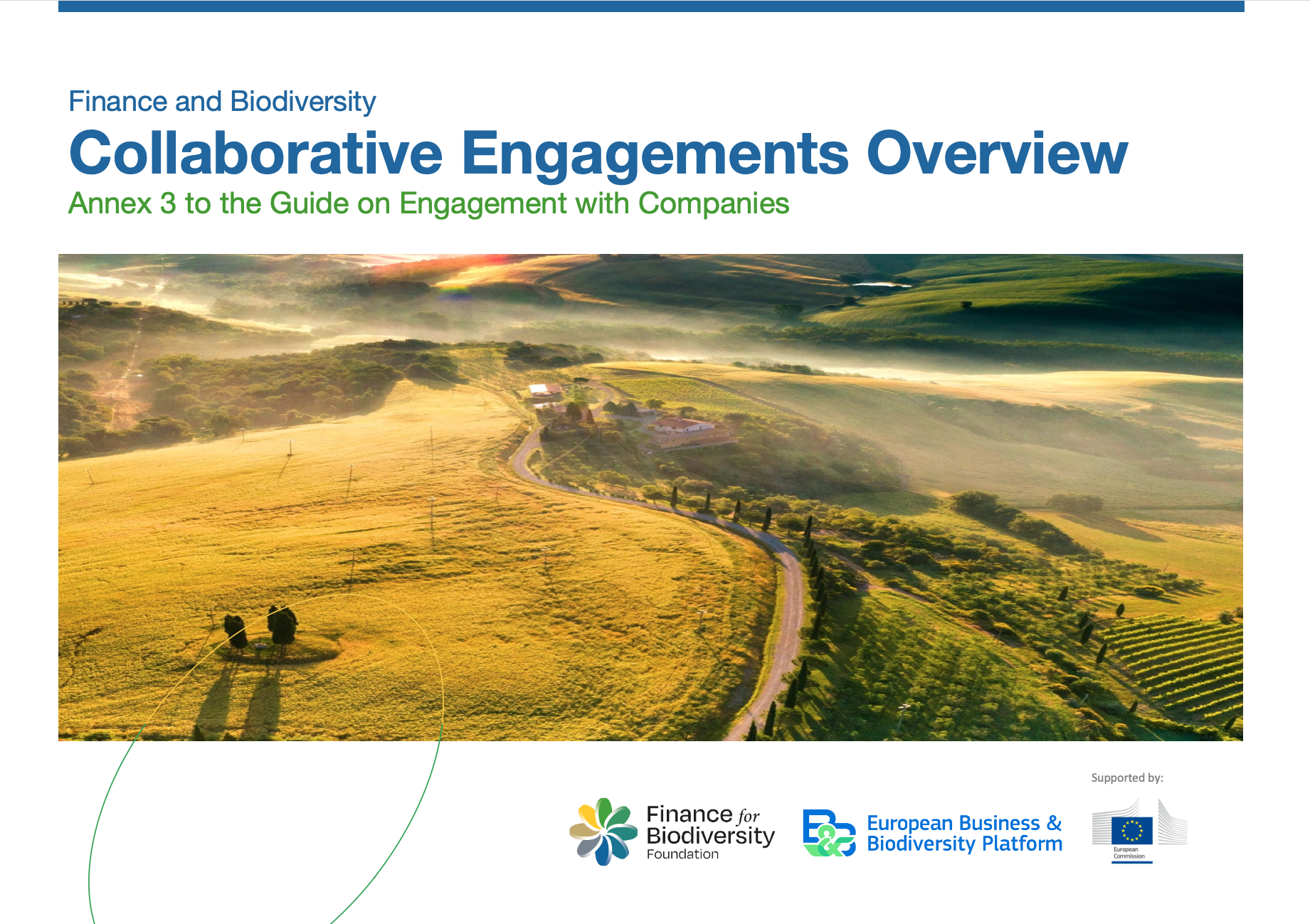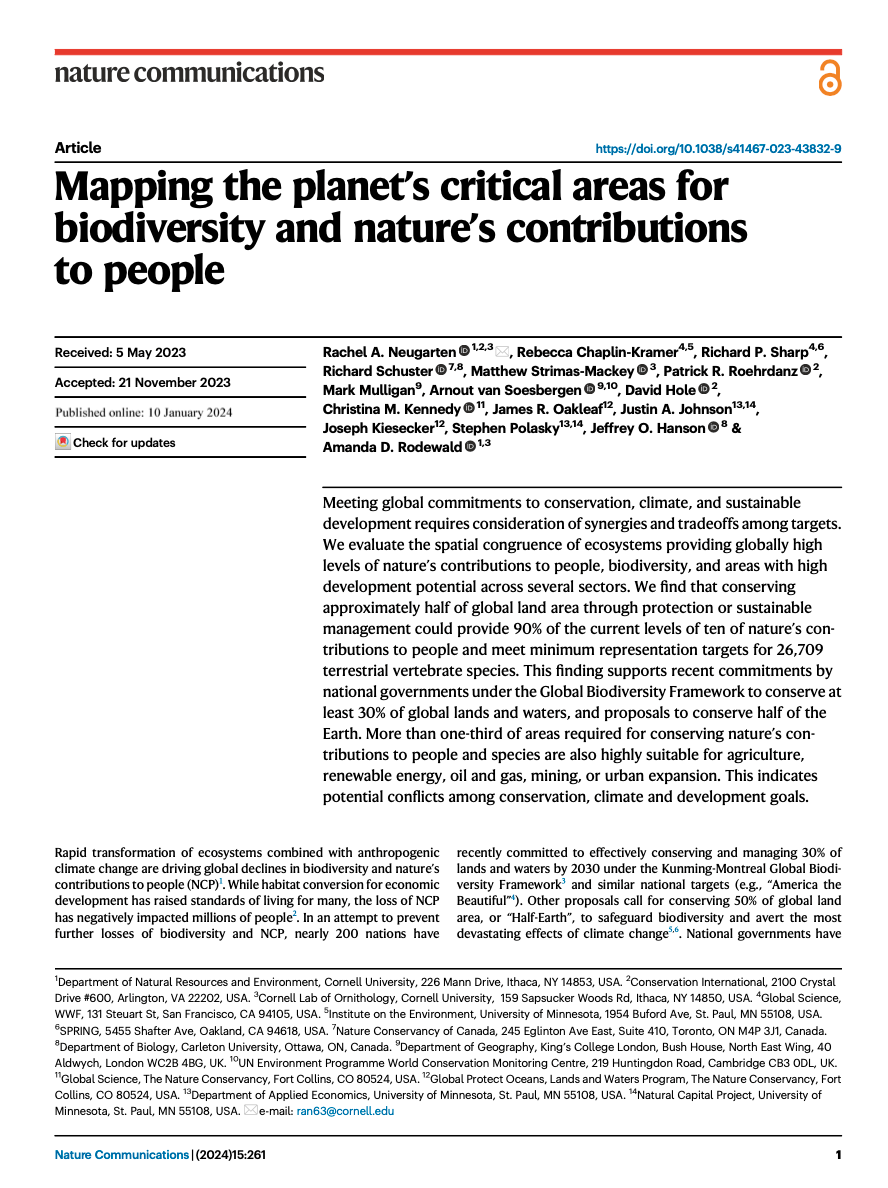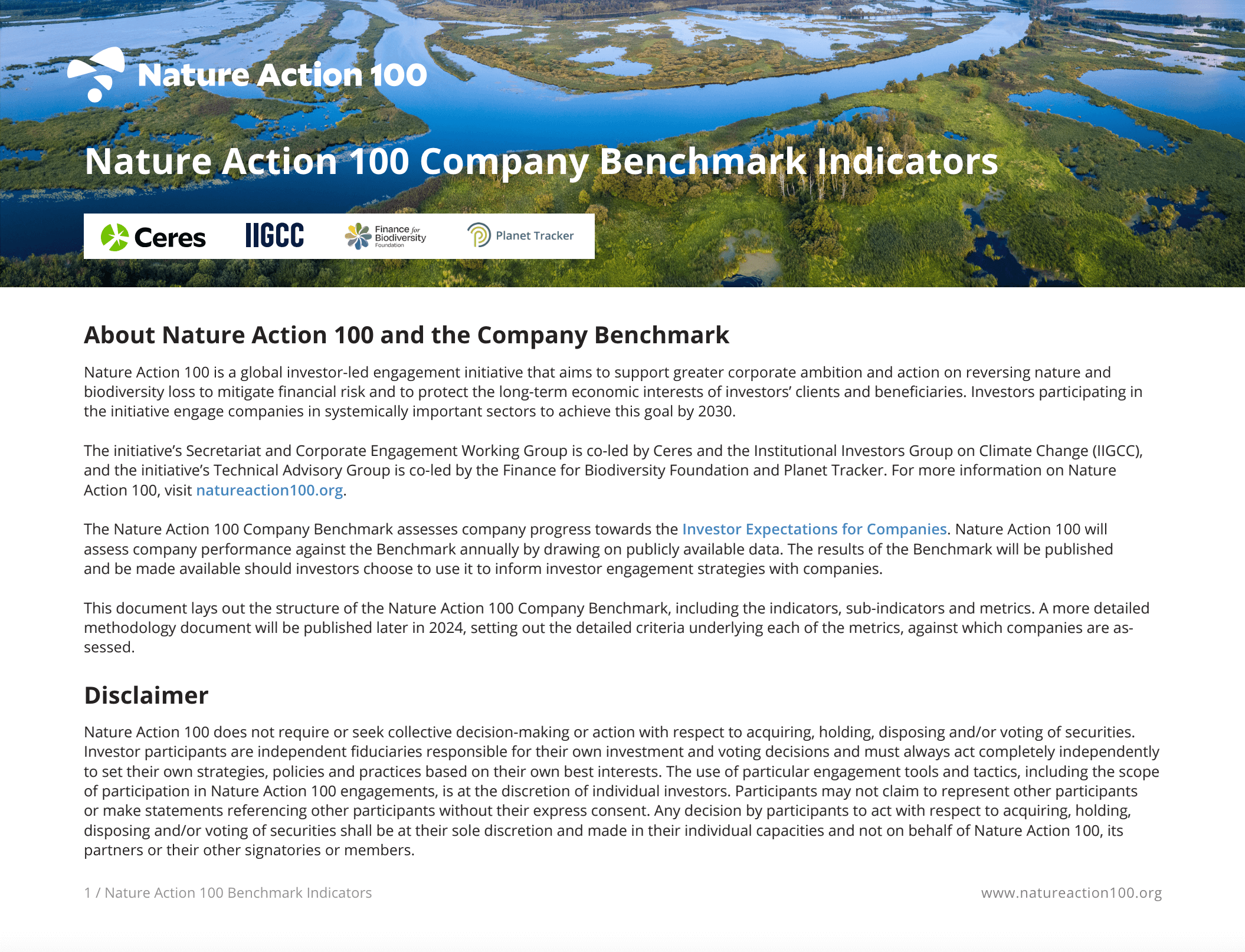Science Based Targets for Land V3 – Supplementary Material. SBTN Natural Lands Map: Technical Documentation
Detalles
| This guidance is intended to help companies prepare to set science-based targets for nature. This guide has been developed by the Land Hub of the Science Based Targets Network as a contribution to the Science Based Targets Network (SBTN), which aims to transform economic systems and protect the planet's commons: air, water, land, biodiversity and oceans. This version of the SBTN Step 3 guide will allow a selected group of companies to test and align their commitments to nature, with the speed and scale of action required by science. Land use and its change remains one of the most persistent threats to nature and climate, undermining land's contribution to people, businesses, economies and societies. The objectives set out here are the next step in the voluntary responsibility of business to land management, and represent a collaboration that encompasses business, industry associations, academia, intergovernmental organization institutes, intergovernmental organizations, non-governmental organizations and the breadth of perspectives represented by these groups. The three ground targets work together to: - Prevent nature loss in Earth systems, soil conversion and the main driver of biodiversity loss on Earth. - reduce the productive pressure of large agricultural areas whose expansion and continued impact has far outstripped the resilient capacity of the natural ecosystems on which these human systems depend. - Integrate the actions of companies in landscape contexts that improve the ecological and social conditions of the landscapes in which companies operate or as a source. Terrestrial targets are applicable to any company that determines that it has a material impact on major pressures on nature through the land of its operations or those in its supply chain. Within Earth systems, targets are used to define a coherent path for companies to align their commitments and actions with nature's needs: - Goal 1: No to the conversion of natural ecosystems. It avoids one of the main causes of biodiversity loss and a source of GHGs. - Objective 2: Reduction of the land footprint. It reduces one of the most persistent and highly degrading processes affecting biodiversity, climate and land. - Objective 3: Commitment to the landscape places the company's action and effort in the context of collaborating with landscape-scale groups to regenerate working lands, restore degraded or converted ecosystems and transform the way they act on and source from landscapes. |
Recursos relacionados

Collaborative Engagements Overview
This document guides financial institutions on how to collaborate with companies on biodiversity issues.

Mapping the planet’s critical areas for biodiversity and nature’s contributions to people
Meeting global conservation, climate and sustainable development commitments requires taking into account synergies and trade-offs between objectives. This research assesses…

Nature Action 100 Company Benchmark Indicators
The Nature Action 100 initiative, the first global investment community-driven commitment to nature and biodiversity loss, has revealed a series…


